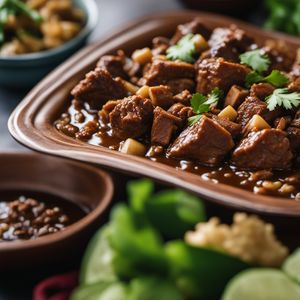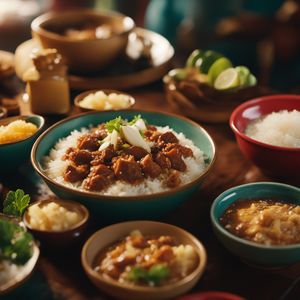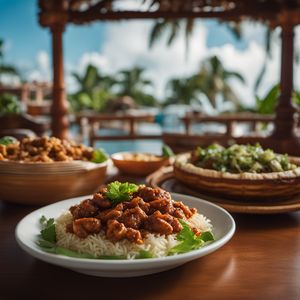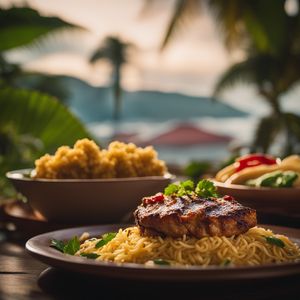
Dish
Indio viejo
Indio viejo is made with cornmeal, which is cooked with water and meat (usually beef or pork) until it forms a thick porridge. The porridge is then flavored with onions, garlic, tomatoes, and chili peppers, and is served with rice and beans. The dish is typically garnished with fresh cilantro and lime wedges.
Origins and history
Indio viejo has been a traditional dish in Nicaragua for centuries. It is believed to have originated with the indigenous people of the region, who used cornmeal as a staple food. The dish was later adapted by the Spanish colonizers, who added meat and other ingredients to the recipe.
Dietary considerations
Gluten-free
Variations
There are many variations of Indio viejo, depending on the region and the cook. Some recipes call for the addition of vegetables, such as bell peppers and carrots, while others use chicken or fish instead of beef or pork. Some cooks also add sour cream or cheese to the dish for added flavor.
Presentation and garnishing
Indio viejo is typically served in a clay pot, which keeps the dish warm and adds to its rustic charm. The dish is garnished with fresh cilantro and lime wedges, which add a bright and fresh flavor to the dish.
Tips & Tricks
To make the dish extra flavorful, use homemade beef or chicken stock instead of water. Be sure to cook the cornmeal and meat mixture over low heat for at least an hour to ensure that it is thick and creamy.
Side-dishes
Rice and beans are the traditional side dishes for Indio viejo. The rice is typically cooked with garlic and onions, while the beans are flavored with cumin and chili peppers.
Drink pairings
A cold beer is the perfect drink pairing for Indio viejo. The light and refreshing flavor of the beer will complement the spicy and hearty flavors of the dish.
Delicious Indio viejo recipes
More dishes from this category... Browse all »

Aab gosht
Indian cuisine

Abgoosht
Iranian cuisine

Adobo
Filipino cuisine

Adobo sa gatâ
Filipino cuisine

Adobong baboy
Filipino cuisine

Adobong baka
Filipino cuisine

Adobong dilaw
Filipino cuisine

Adobong hito
Filipino cuisine
More cuisines from this region...

Belizean cuisine
Bold and spicy, Complex flavors, Combination of elements (sweet, sour, salty, umami), Variety of textures (from crispy to creamy)

Costa Rican cuisine
Simple and natural flavors of the ingredients, Variety of textures (from crispy to creamy)

Guatemalan cuisine
Spicy, Savory, Fresh, Earthy

Honduran cuisine
Spicy, Savory, Fresh, Sweet

Panamanian cuisine
Spicy, Savory, Tangy, Sweet, Sour

Salvadoran cuisine
Savory, Spicy, Tangy, Fresh, Earthy

